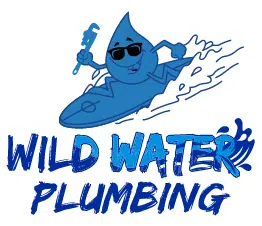WILD WATER PLUMBINGHot Water Heater Not Getting Hot
U.S. Navy Veteran Owned & Operated throughout greater Jacksonville, NC.
WILD WATER PLUMBINGHot Water Heater Not Getting Hot
U.S. Navy Veteran Owned & Operated throughout greater Jacksonville, NC.
A hot water tank that isn’t heating properly can be a major inconvenience, affecting daily activities like showering, washing dishes, and laundry.
Here’s a step-by-step guide to help you troubleshoot and identify the source of the problem.
TROUBLESHOOTING GUIDE
Step 1:
Identify the Symptoms
- No Hot Water: Water from the hot water tap is cold.
- Inconsistent Temperature: Water is warm but not hot enough, or temperature fluctuates.
- Strange Noises: Unusual sounds coming from the water heater.
- Leaking Water: Water pooling around the base of the water heater.
Step 2:
Check the Power Supply (Electric Water Heater)
- Circuit Breaker: Ensure the circuit breaker for the water heater is not tripped. Reset if necessary.
- Power Switch: Verify that the water heater’s power switch is turned on.
Step 3:
Inspect the Thermostat
- Temperature Setting: Ensure the thermostat is set to the desired temperature (usually between 120-140°F).
- Thermostat Function: Test the thermostat to see if it’s functioning correctly. Replace if faulty.
Step 4:
Examine the Heating Elements (Electric Water Heater)
- Inspection: Electric water heaters typically have two heating elements. Use a multimeter to test for continuity.
- Replacement: If one or both elements are defective, they must be replaced.
Step 5:
Check the Pilot Light (Gas Water Heater)
- Pilot Light Status: Ensure the pilot light is lit. If it’s out, follow the manufacturer’s instructions to relight it.
- Thermocouple: If the pilot light won’t stay lit, the thermocouple may need to be replaced.
Step 6:
Inspect the Gas Supply (Gas Water Heater)
- Gas Valve: Ensure the gas valve supplying the water heater is open.
- Gas Line: Check for any leaks or issues in the gas line. If you smell gas, turn off the gas supply and call a professional immediately.
Step 7:
Flush the Tank
- Sediment Buildup: Sediment can accumulate in the tank over time, affecting heating efficiency. Drain and flush the tank to remove sediment.
- Procedure: Turn off the water supply, attach a hose to the drain valve, and let the tank empty. Refill and check if the issue is resolved.
Step 8:
Inspect the Dip Tube
- Function: The dip tube directs cold water to the bottom of the tank for heating. If broken, it can cause cold water to mix with hot water.
- Inspection: Remove and inspect the dip tube for cracks or breaks. Replace if necessary.
Step 9:
Check for Leaks
- Visual Inspection: Look for any signs of water leakage around the tank and connections.
- Pressure Relief Valve: Check the pressure relief valve for leaks. Replace if it’s faulty.
Final Step:
When to Call Wild Water Plumbing
If you cannot identify or resolve the problem using the steps above, it’s time to call a professional.
Wild Water Plumbing can diagnose and repair hot water tank issues efficiently.
Contact Wild Water Plumbing
For expert assistance with hot water tank problems, contact Wild Water Plumbing.
Our skilled technicians will ensure your hot water supply is restored quickly and effectively.
Let's improve your plumbing & water system today!
Veteran Owned Plumbing Repair, Inspection, & Installation Services.
